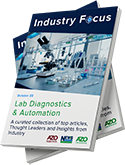Social determinants of health affect the outcomes of many illnesses, and pediatric cancer is no exception. In fact, children with acute lymphoblastic leukemia (ALL) living in poverty are significantly more likely to relapse and die from their disease than those from wealthier backgrounds. While socioeconomic status often influences survival outcomes, children with relapsed/refractory ALL treated with CAR T-cell therapy living in poverty are equally likely to achieve overall survival as children from more socioeconomically advantaged households, according to a study published today in Blood.
CAR T-cell therapy is a type of immunotherapy in which a patient's T-cells, immune cells in the body that fight infection, are removed, genetically modified in a laboratory to help them identify and target cancer cells, and then infused back into the patient's bloodstream where they find and destroy cancer cells. This therapy has been shown to be successful in improving outcomes for those with ALL, yet it can be expensive, time-intensive, and largely out of reach for many marginalized groups.
Further, some researchers argue that because marginalized groups have lower overall survival rates, they may be less likely to fare well with CAR T-cell therapy. However, the results of this new Blood study may change this narrative.
What we see here is that among this cohort, CAR T-cell therapy is equally effective regardless of poverty exposure. This study suggests that CAR T-cell therapies work equivalently."
Haley Newman, MD, a fellow in pediatric oncology in the division of oncology and cancer immunotherapy program, Children's Hospital of Philadelphia (CHOP)
Dr. Newman and colleagues studied the outcomes of 206 children and young adults treated at CHOP, with a median age of 12.5 years with reduced/refractory ALL treated on one of five CD19-directed CAR T-cell clinical trials or with a commercial CAR-T, tisagenlecleucel. They collected data from CAR T-cell clinical trial datasets and electronic medical records from patients treated between April of 2012 and December of 2020. Researchers then sorted patients by socioeconomic and neighborhood opportunity exposures, which they determined using insurance types and patient addresses.
Children with public insurance plans were considered household-poverty exposed, while those with private or commercial insurances were not. Researchers used a census tract-based multidimensional quality measure of US neighborhood metrics to determine neighborhood opportunity, or the access a household has to resources that influence children's health and development, based on where patients were living.
Lab Diagnostics & Automation eBook

"Many previous neighborhood studies have sorted data at the zip code level. We actually had address data for these patients, which allowed us to geocode their census tract, which is the level at which the childhood opportunity index is measured," explained Dr. Newman.
Results revealed no significant difference in overall survival or complete remission rates between household-poverty exposed patients with lower neighborhood opportunity and those from more advantaged households (unexposed to household poverty or living in high opportunity neighborhoods).
Interestingly, the data also demonstrated that children from more advantaged households were significantly more likely to present with high disease burden at the time of referral for CAR T-cell infusion. Because high-disease burden is associated with inferior outcomes and greater risks for toxicity, those presenting with severe forms of disease are generally considered at greater risk with CAR T-cell treatment.
Dr. Leahy, an oncologist in the division of oncology at CHOP, explains that while we know patients with higher disease burdens are generally sicker, the data suggest that those from more advantaged households with high disease burdens are still being referred for CAR T-cell therapy, while those from lower socioeconomic groups may not be referred or may have more challenges to advocating for the same treatment.
"We can't say exactly why we're seeing a difference in disease burden, but it could be due to provider referral biases, families from more advantaged households having more resources to access CAR-T and more flexibility to take time off work for treatments, or there may be a difference in how families are able to advocate for their children to receive this therapy," explained Dr. Leahy.
While these results provide both hope and evidence to increase access to CAR-T for those from disadvantaged households, investigators still voice the importance of replicating these findings in larger populations outside of clinical trial settings. Dr. Newman noted that this study incorporates data from a single center, so its results cannot be generalized to populations outside of the CHOP community.
"This study shows us that patients from disadvantaged households do well with CAR T-cell therapy," said Dr. Newman. "To me, that says that we need to make this therapy more accessible, whether that be through new interventions, or providing more resources for families, like transportation and funding for medical leave."
American Society of Hematology
Newman, H., et al. (2022) Impact of poverty and neighborhood opportunity on outcomes for children treated with CD19-directed CAR T-cell therapy. Blood. doi.org/10.1182/blood.2022017866.
Posted in: Child Health News | Medical Research News
Tags: Acute Lymphoblastic Leukemia, Blood, Cancer, Cancer Immunotherapy, CAR T-cell, Cell, Children, Children's Health, Clinical Trial, Electronic Medical Records, Hematology, Hospital, Immunotherapy, Laboratory, Leukemia, Oncology, Poverty, T-Cell
Source: Read Full Article